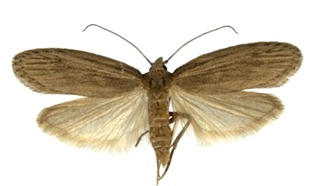FEEDING POTENTIAL AND LIFE HISTORY CHARACTERISTICS OF THE GENERALIST PREDATOR CHRYSOPERLA CARNEA (STEPHENS) FED ON TWO HOSTS
DOI:
https://doi.org/10.71146/kjmr198Keywords:
Biological control, biocontrol agent, Chrysoperla Carnea, Aphis gossypii, Corcyra CephalonicaAbstract
Chrysoperla carnea (Stephens) (Neuraoptera: Chrysopidae) is a generalist predator of many small-bodied insects like aphids (Hemiptera: Aphididae), and Corcyra cephalonica (Lepidoptera: Phyralidae). Studies on the feeding potential of the 1st,2nd, and 3rd of C. carnea were evaluated on aphid adults and eggs of C. cephalonica under laboratory conditions. The incubation period of C. carnea was evaluated at various temperatures I.e., 24cͦͦ, 27cͦͦ, 30cͦͦ. Suggests that the highest survival percentage was observed on 24cͦͦ (78%). The predatory potential of the 1st,2nd, and 3rd instar of C. carnea on adult aphids and eggs of C. cephalonica was 66.6, 139.7, and 293.9. And 49.7, 138.33, and 204.6 respectively at (27cͦͦ with 70±5% R.H). Highest feeding (293.9) was observed by the 3rd instar larvae having daily feeding efficacy of 69.97 on aphids, while the. Highest feeding (204.6) was observed by the 3rd instar larvae having a daily feeding efficacy of 35.96 on eggs of C. cephalonica. The survival percentage was found 78, 68, and 56 at 24±1°C, 27±1°C, and 30±1°C with 70±5°% R.H. The results show that the maximum number of aphids were consumed by C. carnea while feeding on it while the maximum hatching and survival percentage is found in 24±1°C. The developmental duration was significantly affected when the host and rapidly developmental duration was shorter when C. carnea fed on an aphid. The green lacewing, C. carnea is an effective biological control agent in immature stages while predating soft-bodied insects throughout the year mostly in cold areas.
Downloads

Downloads
Published
Issue
Section
License
Copyright (c) 2025 Muhammad Ilyas Khan, Sarir Ahmad, Hafiz Muhammad Saqib Mushtaq, Sumbal, Syed Waseem Shah, Muhammad Shahab Khan, Muhammad Awais, Raheel Zaib Khan, Aneeha Amin (Author)

This work is licensed under a Creative Commons Attribution 4.0 International License.






